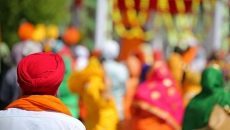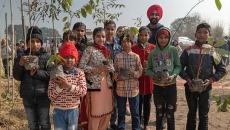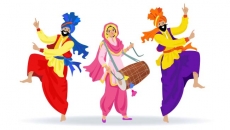South Indian cinema making waves globally: A look at its rise and popularity
In a recent interview, Joe Russo, known for making Marvel movies, spoke about how India is one of the major movie markets for cinema, specifically mentioning SS Rajamouli’s RRR. While he acknowledged Bollywood's significant film business worldwide, he noted its minimal exposure outside India. Fortunately, Indian cinema has returned to the world map with movies like RRR, "which use a level of technical genius, visual effects, and mythological storytelling to appeal to a much wider audience." According to Joe, who spoke to a Hollywood trade website, "We learn about other cultures from movies like that. We want to support other markets as much as possible so their stories can get through more broadly."
From RRR and Baahubali to the recent Oscar-winner, The Elephant Whisperers, South Indian movies have dominated India and made a mark globally. The success of movies like Vikram, Kantara, K.G.F, Pushpa: The Rise, and most recently, Ponniyin Selvan, has made everyone want a piece of the action from South films.
South Indian films rise has been gradually increasing:
However, the buzz around South Indian films did not begin recently. In the early 70s and 80s, filmmakers like Balu Mahendra and K Balachander made a splash in Bollywood with their films being remade in Hindi. In the 90s, Mani Ratnam and Shankar's films, such as Nayakan, Bombay, Sivaji: The Boss and Enthiran, gained national attention. Rajamouli soon followed with his films Eega and the two-part series Baahubali, which achieved national success. Kannada cinema, or Sandalwood, soon made its mark with K.G.F. The first part's roaring success built expectations for the second part, making it an even more, grander film and earning huge box office numbers. With films like Vikram and Ponniyin Selvan appealing to the pan-Indian market, South Cinema found its audience worldwide.
Pandemic high
The pandemic has also played a role in the rise of South Indian films. Although they had releases globally before the pandemic, the number of screens on which they were shown was a question. However, with the increase in viewers resorting to OTT during the pandemic, many Hindi-speaking viewers started streaming South films based on reviews and IMDB ratings. Word-of-mouth reviews from friends, friends-of-friends, Twitter, and Instagram led more people to watch South films.
So, what really is the reason?
Many people believe South films are currently making movies closer to their culture and showcasing stories and people familiar with them. For instance, the hit movie RRR is a story closer to home for the Telugu audience. However, Rajamouli made it appeal to all kinds of audiences through his direction. Kantara, directed by actor Rishab Shetty, took inspiration from his hometown, Keradi, Karnataka, which had not been explored before. Ponniyin Selvan was a historical novel that many Tamilians had read, making it more relatable to them. Even a commercial, period-gangster film like K.G.F was set in Kolar Gold Fields. While Malayalam films do not see the box office high like other industries, their films are always rooted in their culture and known to be more realistic. Although audiences love Marvel movies, they also yearn for realistic films that showcase life where they come from, characters with whom they can relate, and picturesque scenes from places they belong to.
Number game begins
The box office number game is beginning to change as South films release pan-India or pan-world in multiple languages. Audiences who speak different languages are now watching films featuring South actors based on reviews and the hype surrounding the movie. Even Bollywood biggies are eager to work with South filmmakers and be part of South Indian films. While earlier, only B, C-listed actors used to work in South Indian films, today, even A-listed stars want to act in movies with top stars in the south. Lines are definitely blurring, and the urge to make better films is rising.






